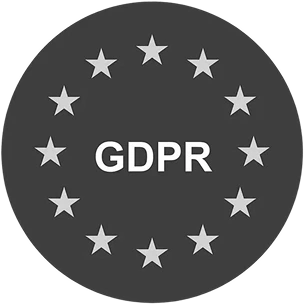Put the customer at the heart of every department by sharing tailored customer support insights with different teams.
Introducing the latest update in the SentiSum platform: Your Dashboards.
In this webinar, we take you through:
- How to easily segment your data into relevant reports for teams like Product, Logistics and Marketing in SentiSum
- Removing the middle-man by enabling teams to self-serve tailored information
- How putting customer feedback at the centre of your organization can reduce churn, improve CSAT scores and improve relationships between Support and wider teams
What is it important to share customer support insights across wider departments?
Here at SentiSum, sharing insights from your customer support conversations and surveys is, of course, something that we and our customers advocate for, given the goldmine of insights that comes into support.
For support leaders, trying to get buy-in from other teams on issues customers are raising can be difficult, as quantifying the impact of these issues in a way that translates into business goals can sometimes be a challenge.
In our latest release, Your Dashboards, we've been looking into how we can further support SentiSum users in fighting the good fight and getting the voice of the customer across to other departments in a way that's relevant to people outside of support.
But why is this so important?
Championing the Voice of the Customer
When analysing customer sentiment and NPS on the SentiSum dashboard, it's quite clear that there's a close link between the two metrics.
In a recent study by Customer Gauge, they found that a 10 point increase in NPS, on average, actually leads to 3.2% increase in profits.
Therefore, if you analyze free text within NPS responses and look at where people's pain points are, you can identify the negative drivers that are pulling your score down, which can lead to an increase in profits.
This translates insights into something that senior leaders, senior stakeholders, people who will be driven very much by the bottom line, will care about.
Driving meaningful change
Using demo data within the SentiSum dashboard, we can look at an example where the highest percent of tickets, 14%, are tagged with "what is delivery status".
With this information, we can enable logistics teams to deep dive into the current delivery process and subsequent customer updates to find where this isn't working well enough, where we can improve access to information, and perhaps even go a step further in working with delivery companies to explore whether there's a shortfall in their performance.
"If we're spending X amount of time supporting this specific part of the product, or in this case of the process customer journey, that equates to X, Y, Z dollars over the course of a year." - Shannon Johnson, Director of Customer Support at Sprout Social and podcast guest
To drive meaningful change, we need to show the impact, not just from a customer satisfaction standpoint, but also from a monetary and a revenue driven standpoint.
If 14% of support tickets are spent on something which could easily be automated or solved at the root, we can calculate how much time and money it could save the support team if these tickets weren't coming through, and remove a barrier to success for our customers at the same time.
Changing perception of support
Even today, we still hear that support is seen as a cost center within many organizations.
Support is not a cost center, at least it doesn't have to be.
A recent study showed that 90% of customers will leave a service or product due to poor service. This statistic is made even more serious when you think about the fact that the majority of customers who are unhappy with a service or experience won't even complain, they will leave silently, meaning that each ticket you get doesn't just represent one customer.
On the flip side, other studies show that 86% of people surveyed would actually be willing to pay more money for a better experience, making good support a revenue driver and allowing you to make excellent service a part of your product.
A common way to see if this would work for your organization is to offer a 'VIP' level membership and see how much extra people would pay for that expedited service, quicker responses and more attention in general. For example, many retail companies already offer this in the form of quicker delivery for premium members.
And if it works for your organization, you can look to scale this offering.
Fostering brand advocacy
Some studies have shown that only 1 in 26 customers will complain about bad service, leaving the other 25 who won't contact support.
Of those remaining 25, some may go on to leave negative reviews, share negative comments on social media or damage your reputation through word-of-mouth by telling friends about their bad experiences.
When someone makes a complaint to customer support, they are opening a dialogue and giving the business an opportunity to turn change their perception of your brand from negative to positive.
This can be through being heard in an empathetic way, being responded to quickly and resolving an issue quickly, and doing root-cause analysis to proactively fix bigger issues affecting customers. In other words, good service.
Turning those detractors into promotors by fixing problems at the root, means you're not only solving an issue for the customer who has complained, but for the others experiencing the same issue who said nothing, making them less likely to promote your business negatively and more likely to advocate for your brand.
Watch the full webinar to see a full demonstration on how you can use My Dashboards to create personalized reports for different departments, including Marketing, Operations and Logistics, and Customer Service.
Follow us on LinkedIn to stay up to date on upcoming webinars and events.
If you enjoyed the insights we discussed in this webinar, check out our Support Insights podcast, where we speak to customer-centric department leaders about a different topic every 2 weeks.

.svg)
.webp)



